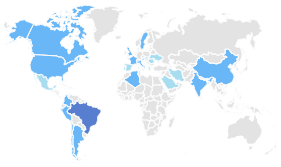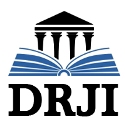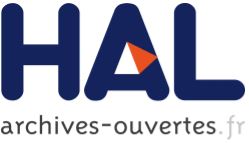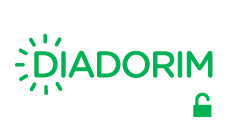Terraforming the Aral Sea Basin: Geomorphological and Anthropogenic Foundations (second part)
Resumo
This paper presents a study on ancient geographic maps of Central Asia in order to collect indications of geomorphological oscillations in the Aral Sea basin that consubstantiate the proposal of terraforming the region, currently dominated by a desert named Aralkum. The research was carried out on maps of renowned authors, following a chronology that began in the 16th century. The total information collected, including those of the actual situation, was organized in two parts, the first called "The Pre-Soviet Aral Sea" with the maps, the second called "The Post-Soviet Aral Sea" illustrated by high-quality NASA photos. Theoretical considerations about thermodynamic phenomena and thermal devices were organized from a perspective of control engineering. The concept of entropy was addressed as a keystone of the technical proposal for monitoring the region, if partially restored.
Keywords:terraforming, Aral Sea, Aralkum, OTEC Device, thermodynamics, entropy.
====================================================================================================================
Este trabalho apresenta um estudo sobre antigos mapas geográficos da Ásia Central, a fim de coletar indicações de oscilações geomorfológicas na bacia do Mar de Aral que consubstanciem a proposta de terraformação da região, atualmente dominada por um deserto chamado Aralkum. A pesquisa foi realizada em mapas de autores de renome, seguindo uma cronologia que começou no século XVI. A informação total recolhida, incluindo as da situação real, foi organizada em duas partes, a primeira chamada "O Mar de Aral Pré-Soviético" com os mapas antigos, a segunda chamada "O Mar de Aral Pós-Soviético" ilustrado com fotos de alta qualidade da NASA. Considerações teóricas sobre fenômenos termodinâmicos e dispositivos térmicos foram organizadas a partir de uma perspectiva de engenharia de controle. O conceito de entropia foi abordado como uma pedra angular da proposta técnica de monitoramento da região, se parcialmente restaurada.
Palavras-chave: terraforming, Mar de Aral, Aralum, dispositivo OTEC, termodinâmica, entropia.
Texto completo:
PDFReferências
Badescu, V., and Cathcart, R. 2011. "Aral Sea Partial Restoration. I. A Caspian Water Importation Macroproject."Int. J. Environment and Waste Management 7 (1; 2).
Engels, W., and Zabihian, F. 2014. "Principle and Preliminary Calculation of Ocean Thermal Energy Conversion."ASEE 2014 Zone I Conference, Bridgeport, USA.
Ferguson,R.2004.The Devil and the Disappearing Sea.Vancouver:Raincoast Books, 2004.
Glantz, M. 2004. Creeping Environmental Problems and Sustainable Development in the Aral Sea Basin. Cambridge University Press, Cape Town.
Issanova, G., Abuduwaili, J., Galayeva, O., Semenov, O., Bazarbayeva, T. 2015. "Aeolian Transportation of Sand and Dust in the Aral Sea Region."Int. J. Environ. Sci. Technol 12, 3213-3224.
Izhitskiy, A., Zavialov, P., Sapozhnikov, P., et al. 2016. "État Actuel de la Mer d’Aral: Caractéristiques Physiques et Biologiques Divergentes des Bassins Résiduels."Scentific Reports 6: 23906.
Apontamentos
- Não há apontamentos.
Direitos autorais 2017 CALIBRE - Revista Brasiliense de Engenharia e Física Aplicada
Indexadores, Diretórios, Bases de Dados e Registros (Abstracted and Indexed in):

CALIBRE - Revista Brasiliense de Engenharia e Física Aplicada
ISSN Eletrônico: 2526-4192































